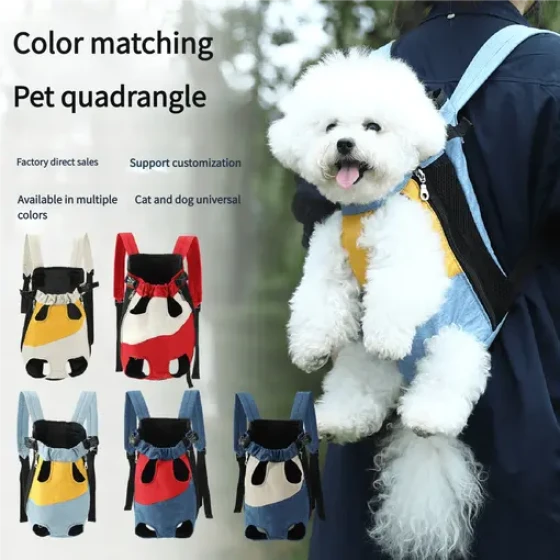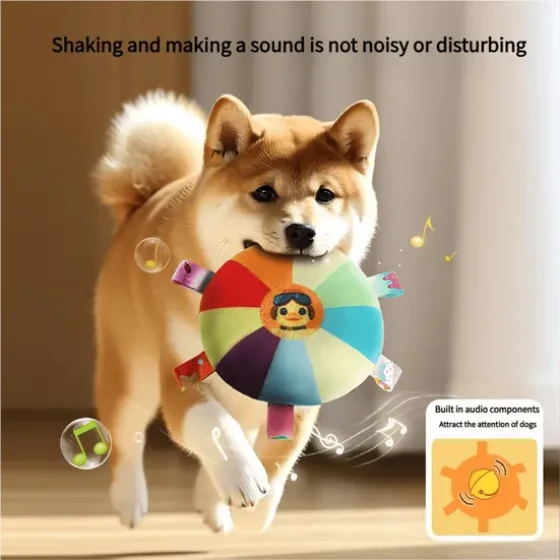How to Correctly Handle Dog's Lunging Behavior

Dog lunging behavior can potentially impact others, affecting their normal life and physical health. Such behavior is strictly prohibited. As pet dog owners, how should we correctly handle our dog's lunging behavior!
First, we analyze the reasons for dog lunging:
1. Dog's Habit: When the dog is still a puppy, because the strength is not great, trainers do not deliberately correct the dog's pulling behavior on the leash. Eventually, the dog thinks that pulling ahead of the trainer on the leash is correct and that the trainer prefers it.
Trainer guiding a puppy dog
2. Dog's fast physical release: If the dog stays at home all day and cannot fully release energy during the walk time, the dog will try to quickly expend energy in a limited time. Then lunging and fighting naturally become the dog's main choices to vent.
Dogs fighting to release physical energy
3. Dog's nature: Some dogs can normally walk calmly beside the trainer, but when other dogs, cats, or mice appear, they immediately rush toward the other party, causing great pressure on the trainer. This is because, in the dog's eyes, what appears ahead could be a threat or prey, naturally exciting the dog to confront it—this is their survival instinct.
Dog's nature
Next, let's discuss solutions for dog lunging:
1. From the cause analysis, lunging cannot be improved by harnesses and leashes alone. A suitable harness and leash only protect the dog from injury during lunging! An H-type harness prevents compressive injury to the dog's trachea under sudden lunging force, thus providing protection, also called anti-lunging harness. Another “T-shaped Front Clip H-type Harness” with a front clip design can change the lunging direction through pulling, dispersing the forward lunging force and alleviating lunging behavior to a certain extent. Thus, the correct harness mainly plays an auxiliary role and cannot fundamentally improve the lunging behavior.
Leash protecting the dog
2. In daily dog training, we use a clear "No" command to prohibit the behavior. Trainers must remain calm and help the dog calm down from excitement, because an excited dog cannot think or receive useful information. Once prepared, training can begin.
Trainer guiding dog with commands
Pre-walk behavior adjustment: Most dogs are very smart and know whether they are going out by the trainer's clothes or belongings. A lunging dog is usually excited before going out, circling the trainer, jumping, or scratching doors and people. This shows excessive excitement. At this time, the trainer should pick up the leash and wait for the dog to sit or lie quietly. Once the dog calms down, drop and pick up the leash repeatedly until the dog is no longer excited. Then attach the leash properly to prepare for going out. Similarly, if the trainer touches or slightly opens the door and the dog tries to rush out, wait for the dog to calm down again. Pulling the dog back by leash is not recommended; instead, block the dog's exit path with the body and gently push the dog back into the room. Repeat until the dog calms and give an exit command.
Guiding dog to sit
After going out, whether stairs or elevator, if the dog still lunges, shorten the leash and use the body to keep the dog beside or behind the trainer, preventing the dog from overtaking. This can be tough and requires repeated “opposition” with the dog and lots of time, especially in the first days. Prepare sufficient time and patience before training.
Putting leash on dog before going out
On-leash behavior adjustment: Shorten the leash to allow the dog to stay at the trainer’s side, hand vertical to ground. The shorter the leash, the faster communication between trainer and dog. When walking, trainers should keep head up and chest out, looking forward. If the dog pulls or gets excited, stop immediately and ask the dog to sit. If the command doesn’t work, press on the dog's backside firmly and quickly to force sitting, all in one smooth motion. If forcing down once is not enough, practice more without verbal commands to avoid misinterpretation. The dog’s calm-down time varies individually, requiring patience—usually at least 3 to 5 minutes.
Owner guiding dog to calm down
Once the dog calms, continue walking. If lunging occurs again, repeat the above steps. Because the leash is short, if lunging behavior is detected early, pull sideways on the leash once to prevent pulling forward. This reminds the dog not to lunge or redirects its attention to the trainer. If still excited, repeat the sit method. Reward the dog if it gives up lunging and continue walking.
Making the dog follow the owner
Lastly, a special reminder to trainers: You must have the determination and confidence to adjust your dog. Dogs are mirrors reflecting the trainer’s feedback. Indulgence is not necessarily good. Proper socialization training, correct stopping, and guidance will teach dogs how to happily enjoy outings.
-560x560.webp)



-560x560.webp)
